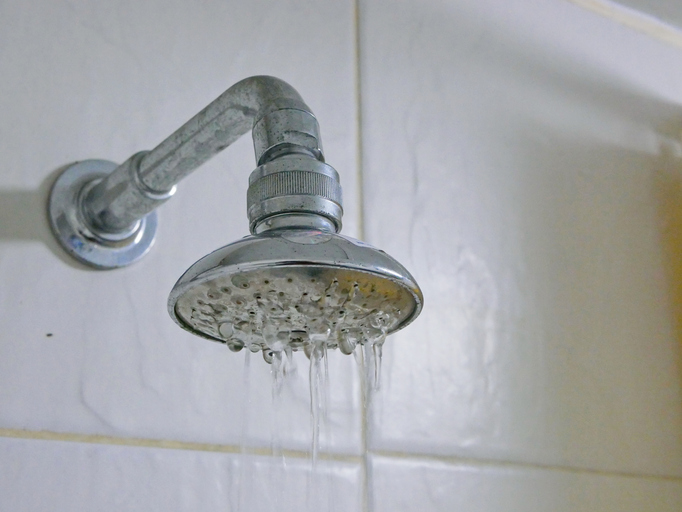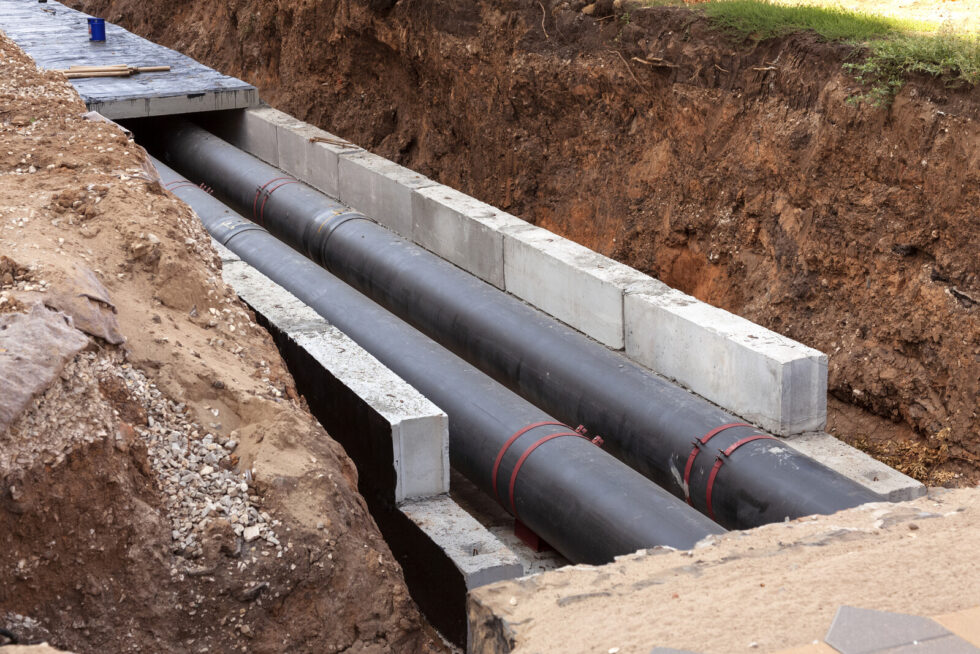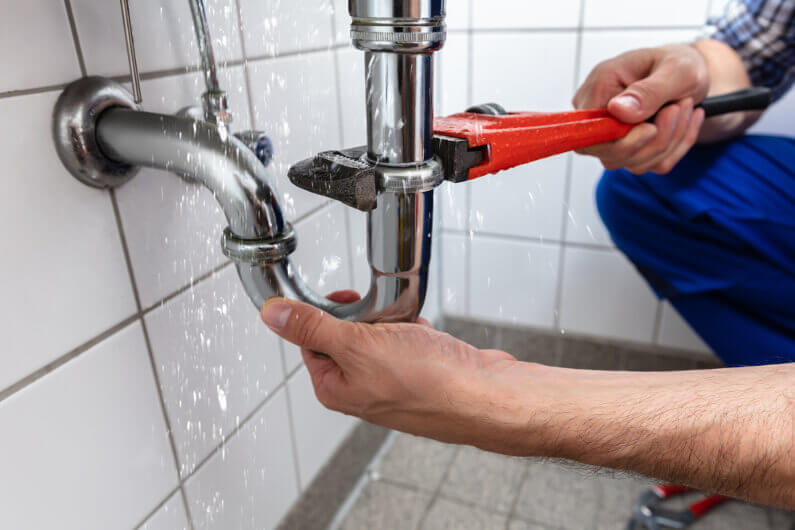
0% Financing Available
Believe it or not, spring really is right around the corner. Here in Texas, we have a host of common plumbing problems that can get worse over the year if not treated when the weather warms up, so stay ahead of them with some spring cleaning of your home’s plumbing system. Here’s how a little time and attention now can save you headaches and money later.
Appliances
Start with all the appliances in your home that access your plumbing system such as the refrigerator, dishwasher, washing machine and ice machine. Look them all over for any sign of leaks or any bulges in hoses, which indicate the hose needs to be replaced. Also consider replacing any hoses that are older than 10 years; use stainless steel hoses wherever possible as they are less prone to failure.
The other major appliance to consider is your water heater, whether tanked or tankless. First, ensure the temperature is set to the recommended 120 degrees. Then check around the unit for any soot, rust, puddles or other signs of leakage; if you find any, have the unit checked by a licensed, professional plumber.

Further, if you have a tank heater, you need to gauge the state of the tank’s interior by draining a few gallons of water and seeing how it looks. If you see any evidence of corrosion, you might need a new unit; again, consult your plumber (and perhaps consider going tankless). This draining will also flush any sediment that has built up, which can reduce the heater’s lifespan and efficiency; keep draining until the water runs clear. For more information on this procedure, check your water heater manufacturer’s website for instructions specific to your make and model.
Finally, look at the first four digits on your tanked water heater’s serial number, as they indicate the month and year your unit was made. If it’s been at least 15 years, remember that tanked heating units aren’t designed to last much longer than that and consider upgrading to a more energy-efficient unit, either tanked or tankless.
Kitchen and Bathrooms
Now move into the parts of your house where water is used most frequently and check the basics:
- Check all drains for any clogs or slow-moving drainage.
- Check all water fixtures for any slow drips or evidence of other leaks.
- Check all exposed pipes and connections under sinks for signs of leaks.
In the bathrooms, pay special attention to the showers and toilets:
- Ensure your toilet doesn’t have any leaks by adding a few drops of food coloring to the tank; if there’s a leak, you’ll see color in the bowl within 30 minutes. In addition, check your toilet, and the floor underneath it, for any signs of worn-out parts or leaks.
- If the showerhead has developed a hard-water mineral buildup, you can remove it fairly quickly and easily with white vinegar. If the head comes off, soak it in vinegar; if not, put vinegar in a plastic bag and attach it to the head with a rubber band so that the head is soaking. Let it soak overnight, then gently scrub with an old toothbrush to remove any remaining deposits.
Wrap up this section by looking closely at all grout throughout your home, whether it be in floor tiles, backsplashes, counters, etc.; also examine the bathtubs and trim. Look for any sign of mold or new cracks that may have occurred during the winter’s temperature fluctuations and seal them before they can spread or allow leaks.

Outside
Of course, your home’s water system extends beyond your walls, and outdoor leaks can be just as damaging as those inside. Here are the basics:
- Check all exterior faucets and hose bibs to make sure water flows freely and that there are no signs of leaks or drips.
- If you have an irrigation system, call a professional plumber to check the system and prime it for the warmer months.
- Walk your yard and look for any areas of unexplained dampness, ground settling, or unusual growth of grass or moss; these can all indicate a water leak or burst pipe, possibly caused by the new roots that trees and bushes put out in the spring.
Finally, ensure that water moves as it should throughout your property by doing the following:
- Clear your rain gutters and downspouts of any debris that gathered in the fall and winter. Make sure that the angle on the ground level directs water away from your home’s foundation.
- Inspect your plumbing vent pipes (on your roof) and make sure they’re clear of any debris such as tiny birds’ nests; any blockages can make your plumbing fixtures drain slowly.
- Check the caps on any sewer backflow or cleanout pipes in the yard; the caps should definitely be on, but left loose so they can work as intended and pop off easily in case of sewage backup.
Miscellaneous Checkpoints
Congratulations, you’re almost done! To double-check all the spring cleaning you’ve accomplished:
- Take a walk through the house looking for any watermarks or signs of leakage on the inside walls or ceilings; use a flashlight if necessary. If you find anything new, there are likely leaks that should be dealt with immediately. Call us right away for a free consultation.
- In Texas, the perpetual humidity can settle in and cause problems. Put on some heavy-duty gloves and unwrap any plumbing insulation to check for mold or dampness. If it looks good, rewrap the pipes for protection during those unexpected cold spells. If the insulation is damp, moldy, or in any other way spoiled, replace it and ensure the pipe it covers isn’t compromised in some way.
- Discover slow leaks in your home’s water system by checking the water meter both before and after some time period when the water isn’t in use, like overnight or when everyone is away from the house for a few hours. If the reading changes, you have a leak somewhere in your system that should be addressed. Another reliable sign of a leak is low water pressure throughout your home.

Call the Professionals
We’ve used the word “check” frequently throughout this list, and by now you’re probably wondering what to do if you find something amiss. It’s simple: Fix what you can, but if anything gives you pause, give us a call. And if you want to stop worrying about your home’s plumbing system throughout the year, join our Preferred Customer Club.
Schedule An Appointment Today:
Schedule NowContact Us Today
Services We Offer
Service Plans
Areas We Service
Service Areas
- Arlington
- Bedford
- Colleyville Plumbers
- Euless
- Reliable, Fort Worth Plumber
- Reliable Plumber in Grand Prairie
- Grapevine
- Hurst
- Keller
- Professional Lewisville Plumbers
- Mansfield Plumbing Service
- North Richland Hills
- Professional Plano Plumber
- Plumber in Garland
- Plumber in Highland Park
- Plumbing Company in Flower Mound
- Professional Dallas Plumber
- Professional Rowlett Plumber
- Southlake




